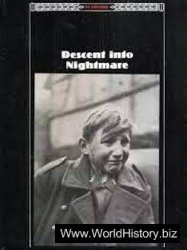What did you learn about salvation and the Bible in church today?” a mother asks
in Spiritual Conversation Between a Mother and Child About True Christianity ,
a satirical poem published in Amsterdam in 1650. “Nothing,” the child answers. “About
the prophets and Revelation?” “Nothing.” The mother then launches into a harsh critique
of the clergy’s monopoly of religious discussion despite their lack of spiritual
understanding:
No one is allowed to contradict him
Even if he says that crooked is straight
And black is white. He must be right.
The author of this poem, Anna Owen Hoyer ( 1584–1655), is certainly not the household
name that Martin Luther is, but her writings and her life can serve as a mirror
for understanding key religious developments in the seventeenth and eighteenth centuries
as fully as his can for the sixteenth. She attacked clergy in an established state
church – in her case, the Lutheran church of her native Schleswig-Holstein in northern
Germany – for laxness, pride, greed, and empty formalism, calling them “devil
pastors” and even blaming them for the Thirty Years War. She advocated churches that
did not have close relations with a state, and called on lay people to develop practices
that met their spiritual needs better than the state churches did. She met with a small
group of like-minded individuals, and they were forced to fl ee religious persecution,
eventually fi nding refuge far from home. Her enemies were equally harsh in their
language, describing women such as Hoyer as the “false prophetesses” and “frenzied
female persons.” 1
Hoyer, and many others like her, was responding to developments in European
Christianity that might be seen as signs of strength and success. From the late sixteenth
century, Lutheran, Calvinist, and Catholic university professors and theologians
created and defended elaborate theological systems that drew clear lines of difference
between the Christian confessions. Such systems are often called “confessions” or “orthodoxies,”
the latter a word of Greek origin that Christians had long used to mean
“true belief.” Western European orthodoxies are spelled with a small “o” to distinguish
them from Orthodoxy, the term used to describe the Christian churches of eastern
Europe, such as Greek Orthodoxy, Russian Orthodoxy, Serbian Orthodoxy, and so on
(these also developed their own “orthodoxies,” to some extent). Highly educated clergy
dominated intellectual life in many cities, and in Lutheran and Calvinist areas important
preaching positions and chairs of theology were often handed down from father to
son, or from father to son-in-law, creating virtual clerical dynasties. Village priests and
pastors received more thorough training than they had before the Reformations, and
were expected to communicate orthodox religious ideas to their parishioners through
sermons and teaching, strengthening their religious understanding and adherence in
the process of confessionalization.
Confessional unity was a matter of secular law, not simply religious practice. Though
the Thirty Years War persuaded most people that religious unity was not possible in
Europe as a whole, it did not convince many religious or political leaders of the virtues
of toleration within one territory. English Puritans who were too vocal in their opposition
to bishops and elaborate ceremonies during the early reign of King Charles
I were persecuted, but many of those same individuals later backed harsh laws against
Catholics and radical Protestants. This happened at exactly the same time as King Louis
XIV of France was intensifying punitive measures against Protestants, and Russian tsars
were persecuting “Old Believers,” clergy and lay people who did not agree with changes
in liturgy, prayers, and rituals ordered from above. In 1689, the English Parliament
and the rulers William and Mary did agree to limited religious toleration, a policy that
had already served the merchants who controlled the Netherlands well. Only in a few
German and Dutch cities did people of more than one Christian confession have equal
political and legal rights, however, a situation that did not begin to change until the very
end of the eighteenth century. In 1731, in fact, the Catholic archbishop of Salzburg ordered
thousands of Protestants in his territory into exile, giving them eight days’ notice;
Prussian offi cials resettled many of them in Prussian territory, though some ended up as
far away as the British colony of Georgia. Every state in Europe had secular laws against
witchcraft and sorcery, and secular offi cials were just as active in hunting and executing
witches as were members of the clergy.
Confessional standardization and religious coercion created established state churches
that were powerful institutions, but increasing numbers of people began to think
that these churches had lost their spiritual vigor and encouraged empty conformism.
Like Anna Hoyer, they turned to groups that emphasized personal conversion, direct
communication with God, interior individual piety, and moral regeneration. Some of
these groups, such as the Levellers who advocated communal ownership of property in
Civil War England, survived only briefl y and had little long-term impact. Others, such
as the Quakers, became involved in social and political changes in both Europe and
European colonies. Others, such as the Moravians in central Europe or the Methodists
in Britain, became institutionalized as separate denominations. Still others, such as the
Jansenists in the Netherlands and France or the pietists in Germany and Scandinavia,
shaped the existing Catholic and Protestant churches. Catholicism, Lutheranism, and
Calvinism all came to include individuals who regarded personal piety and an active
devotional life, as well as services and rituals, as central to Christian spirituality.
Though it has been more extensively studied for western European Christianity,
the interiorization of religion, emphasis on personal piety, and hostility to established
churches also included Eastern Orthodoxy, Judaism, and, to some degree, Islam in the
Ottoman Empire. Old Believers in Russia opposed changes in liturgy and ritual made
by the state church, and in the eighteenth century formed large communities that followed
strict rules of piety and behavior. Jews focused on the mystical teachings of the
cabala as a guide to morality, and in the eighteenth century supported the vibrant
emotional spirituality of Hasidism. Within Islam, Sufi shrines and brotherhoods offered
the possibility of intense religious devotion without years of study of the Qur’an.
Thus, in terms of religious life, the seventeenth and eighteenth centuries saw both a
continuation of the process of consolidation begun in the sixteenth century and calls
for renewal that highlighted the shortcomings of established churches.




 World History
World History









